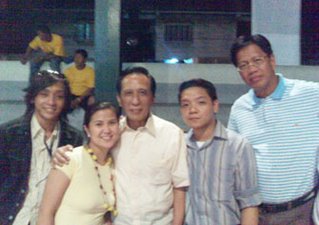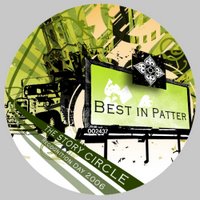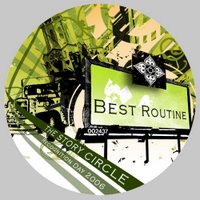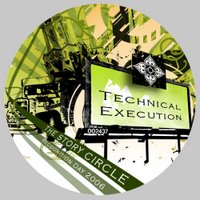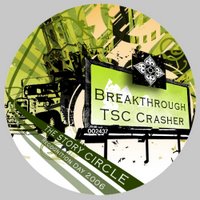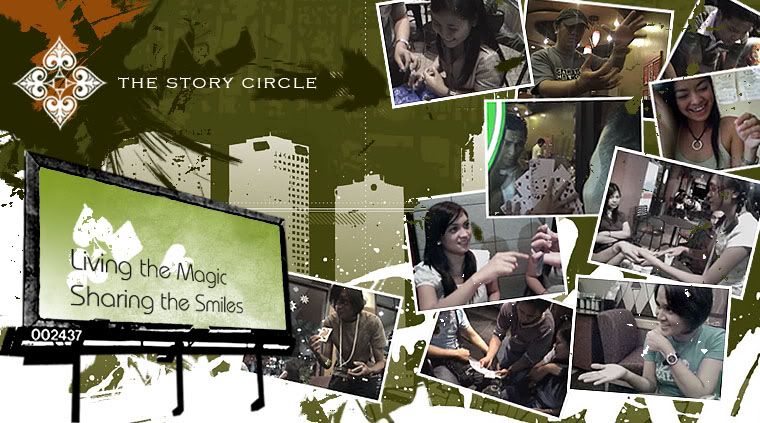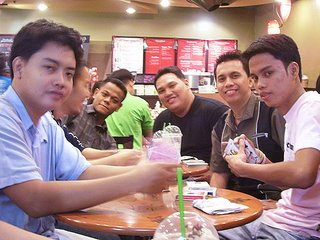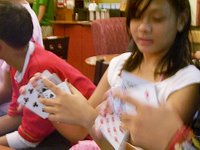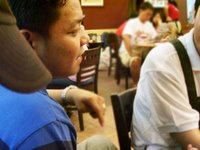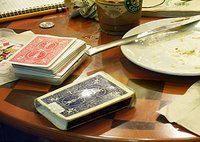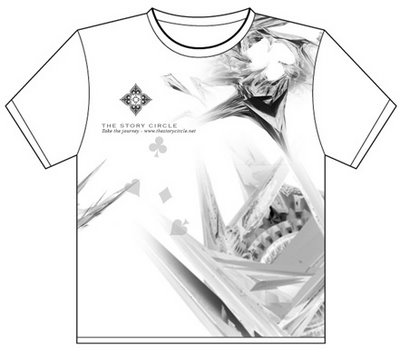~
So you want to learn Magic and Illusions? Then you need to first have a clear definition of it.
Magic or conjuring is the art of entertaining an audience by performing illusions that baffle and amaze, often by giving the impression that something impossible has been achieved, almost as if the performer had magic or supernatural powers. Yet, this illusion of magic is created entirely by natural means. The practitioners of this mystery art may be called magicians, conjurors, illusionists or sleight of hand artists. (Wikipedia.org)
Magic is a hobby in it’s very basic which may continue on to be a career. As with any hobby, magic can be expensive to get into. Fortunately, playing cards (the most popular tool for magic) are very cheap. However, the means to learning conjuring with it and everything else such as coins, ropes, silks and so on will require a hefty budget.
Magic will also require a lot of discipline on the part of the learner. This is an art form that will ask for time, patience, dedication and hard work when it comes to practicing your tricks (known to magicians as effects). Magicians will know that the road to magic is not as simple as buying a book and learning a few tricks. You will also have to research on magic’s history, the people who fathered the methods and principles behind it and the psychology that comes into play when interacting with your audiences (spectators).
--
A Bit of History
Performances we would recognise as conjuring have probably been practised throughout history. The same ingenuity behind ancient deceptions such as the Trojan horse would have been used for entertainment, or at least for cheating in gambling games, since time immemorial. However, the respectable profession of the illusionist gained strength during the eighteenth century, and has enjoyed several popular vogues. Successful magicians have become some of the most famous celebrities in popular entertainment.
Modern entertainment magic owes much of its origins to Jean Eugène Robert-Houdin (1805-1871), originally a clockmaker, who opened a magic theatre in Paris in the 1840s. His speciality was the construction of mechanical automata which appeared to move and act as if they were alive. The British performer J N Maskelyne and his partner Cooke established their own theatre, the Egyptian Hall in London's Piccadilly, in 1873. They presented stage magic, exploiting the potential of the stage for hidden mechanisms and assistants, and the control it offers over the audience's point of view. The greatest celebrity magician of the nineteenth century (or possibly of all time), Harry Houdini (real name Ehrich Weiss, 1874 - 1926), took his stage name from Robert-Houdin and developed a range of stage magic tricks, many of them based on escapology (though that word was not used until after Houdini's death). The son of a Hungarian rabbi, Houdini was genuinely highly skilled in techniques such as lockpicking and escaping straitjackets, but also made full use of the whole range of conjuring techniques, including fake equipment and collusion with individuals in the audience. Houdini's showbusiness savvy was as great as his performing skill. In addition to expanding the range of magic hardware, showmanship and deceptive technique, these performers established the modern relationship between the performer and the audience.
In this relationship, there is an unspoken agreement between the performer and the audience about what is going on. Unlike in the past, almost no performers today actually claim to possess supernatural powers (although there are exceptions to this, they are regarded as charlatans). It is understood by everyone that the effects in the performance are accomplished through sleight of hand (also called legerdemain), misdirection, deception, collusion with a member of the audience, apparatus with secret mechanisms, mirrors, and other trickery (hence the illusions are commonly referred to as "tricks"). The performer seeks to present an effect so clever and skilful that the audience cannot believe their eyes, and cannot think of the explanation. The sense of bafflement is part of the entertainment. In turn, the audience play a role in which they agree to be entertained by something they know to be a deception. Houdini also gained the trust of his audiences by using his knowledge of illusions to debunk charlatans, a tradition continued by magicians such as James Randi, P. C. Sorcar, and Penn and Teller.
Magic has come and gone in fashion. For instance, the magic show for much of the 20th Century was marginalized in North America as largely children's entertainment. A revival started with Doug Henning, who reestablished the magic show as a form of mass entertainment with his distinctive look that rejected the old stereotypes and his sense of showmanship that became popular on both stage and numerous television specials.
Today, the art is enjoying a vogue, driven by a number of highly successful performers such as David Copperfield, Lance Burton, Penn and Teller, Derren Brown, Criss Angel and many other stage and TV performers. David Blaine is sometimes included in this category, though his major performances have been more a combination of Houdini-style escape tricks and physical endurance displays than the illusion magic performed by others. The mid-twentieth century saw magic transform in many different aspects: some performers preferred to renovate the craft on stage --- such as The Mentalizer Show in Times Square which dared to mix themes of spirituality and kabbalah with the art of magic --- others successfully made the transition to TV, which opens up new opportunities for deceptions, and brings the peformer to huge audiences. A widely accepted code has developed, in which TV magicians can use all the traditional forms of deception, but should not resort to camera tricks, editing the videotape, or other TV special effects --- this makes deception too "easy", in the popular mind. Most TV magicians are shown performing before a live audience, who provide the remote viewer with a (sometimes misleading) reassurance that the effects are not obtained with the help of camera tricks.
Many of the basic principles of magic are comparatively old. There is an expression, "it's all done with smoke and mirrors", used to explain something baffling, but contrary to popular belief, effects are seldom achieved using mirrors today, due to the amount of work needed to install it and difficulties in transport. For example, the famous Pepper's Ghost, a stage illusion first used in 19th century London, required a specially built theatre. Harry Houdini led the field of vanishing large objects, by making an elephant disappear on stage, although not using mirrors, and modern performers have vanished objects as big as the Taj Mahal, Statue of Liberty, and the Space Shuttle, using other kinds of optical deceptions.
--
(Wikipedia.org)

